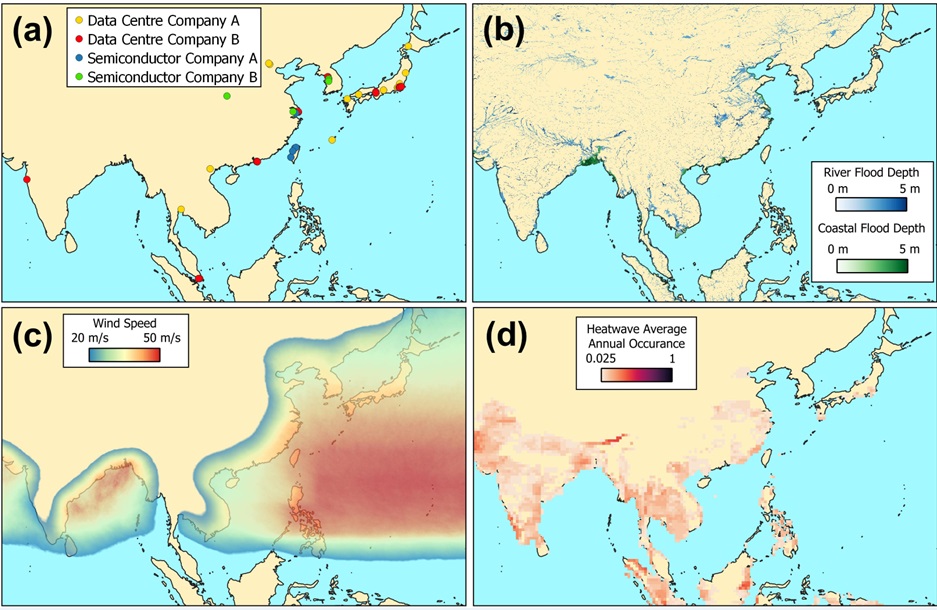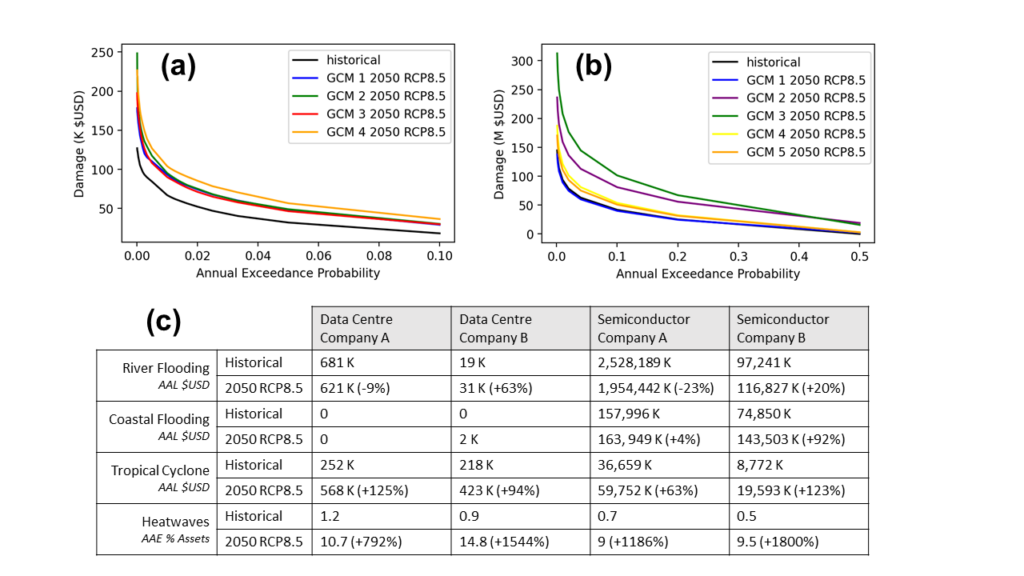CLIMATE-RELATED FINANCIAL DISCLOSURES
Asset owners | Asset Managers
The challenge of pricing physical risks to assets
Pricing the physical risks of climate change broadly remains difficult and limited across listed equity markets, but investors such as Impax Asset Management are actively working to improve this given its increasing importance.
This case study demonstrates the application of data from the Global Resilience Index Initiative (GRII) within physical climate risk assessment as part of analyses to support the preparation of Impax’s TCFD-aligned disclosures.
Physical climate risk is assessed to four companies relevant to and invested in by Impax Asset Management—two data centre operators and two semiconductor manufacturing—with a particular focus on the assets owned and operated by these companies in the Asia-Pacific (APAC) region.
These industries were identified as being particularly susceptible to physical climate risks and where new data was required to fill gaps in existing approaches. Data centres are vulnerable to extreme heat, evidenced by the impacts felt by an important data centre operator in London during the European heatwave of July 2022.[1]
The semiconductor manufacturing process is water intensive, and thus respective manufacturing facilities are notably exposed to water-related risks. The facilities analysed are also geographically concentrated in specific areas in the region, meaning a catastrophic event could have systemic impacts on supply chains.[2]
Assessing climate risk with GRII data
Risk to the four companies’ assets is assessed using GRII data (Figure 1) for four climate hazards: tropical cyclones, river floods, coastal floods, and heatwaves both for the present-day and in 2050 for a high emission (RCP8.5) scenario.
Exceedance probability curves (Figure 2) are calculated for each asset at risk as well as risk metrics Average Annual Loss (AAL) and, for heatwaves, Average Annual Exposure (AAE) by combining GRII hazard information and vulnerability information based on disclosures. These risk metrics are also aggregated to the company level to give company level risk (Figure 2c). Asset values are taken from company disclosure or are estimated based on industry data.
Results from the physical risk assessment indicate that river flooding is currently the most material risk to both semiconductor manufacturing companies and Data Centre Company A, while tropical cyclone risk is the most material risk for Data Centre Company B. Future increases in risk for all companies will be greatest for heatwaves.
Watch: Chris Dodwell, Impax Asset Management, discusses the challenges and opportunities of the project.

Figure 1. (a) IMPAX asset level data. (b) GRII fluvial and coastal flood maps. (c) GRII tropical cyclone wind speed maps. (d) GRII heatwave average annual occurrence maps

Figure 2. (a) Tropical cyclone exceedance probability curve for a Japanese data centre. (b) River flood exceedance probability curve for a Chinese semiconductor manufacturer. (c) Company level risk metrics
For asset managers, a better understanding of physical climate risks
This analysis demonstrates the relevance of acute risks such as flooding and tropical storms for any company reliant on physical assets. It also highlights the magnitude of future changes in exposure to extreme heat. This is of particular importance to data centre companies, whose thermal operating ranges will be stretched by future climate change.
Impax Asset Management will use this information to contextualise the adaptation and resilience plans of these companies, and to deepen its understanding of how physical risk may express itself in these industries, contributing to their ability to understand and price these risks in the future. The demonstration case shows the importance of openly available, transparent and globally consistent risk and resilience metrics as an input to risk assessment.
[1] https://www.wired.co.uk/article/data-centers-climate-change
[2] McKinsey Global Institute. 2020. Climate risk and response: physical hazards and socioeconomic impacts.
Acknowledgements
Use case developed with Oxford Sustainable Finance Group and IMPAX Asset Management



